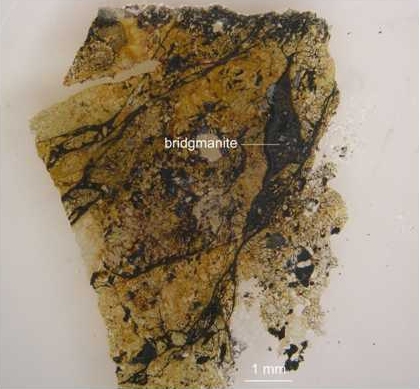
An optical image showing Tenham thin section USNM 7703 where bridgmanite was identified in a shock vein.
The shock melt veins are dark brown to black over the thickness of the thin section of about 30 Ám.
Oliver Tschauner1, Chi Ma2, John R. Beckett2, Clemens Prescher3, Vitali Prakapenka3, George R. Rossman2
Meteorites
exposed to high pressures and temperatures during impact-induced shock often contain
minerals whose occurrence and stability normally confine them to the deeper portions
of the Earth’s mantle. One exception has been MgSiO3 in the
perovskite structure, which is the most abundant solid phase in the Earth. Herein
is the first report on this important phase as a mineral discovered in the
Tenham L6 chondrite and approved by the International Mineralogical Association
(IMA 2014-017). MgSiO3-perovskite is now called bridgmanite. The
associated phase assemblage constraints peak shock conditions to ~ 24 GPa and
2300 K. The discovery concludes a half century of efforts to find, identify, and
characterize a natural specimen of this important mineral.
